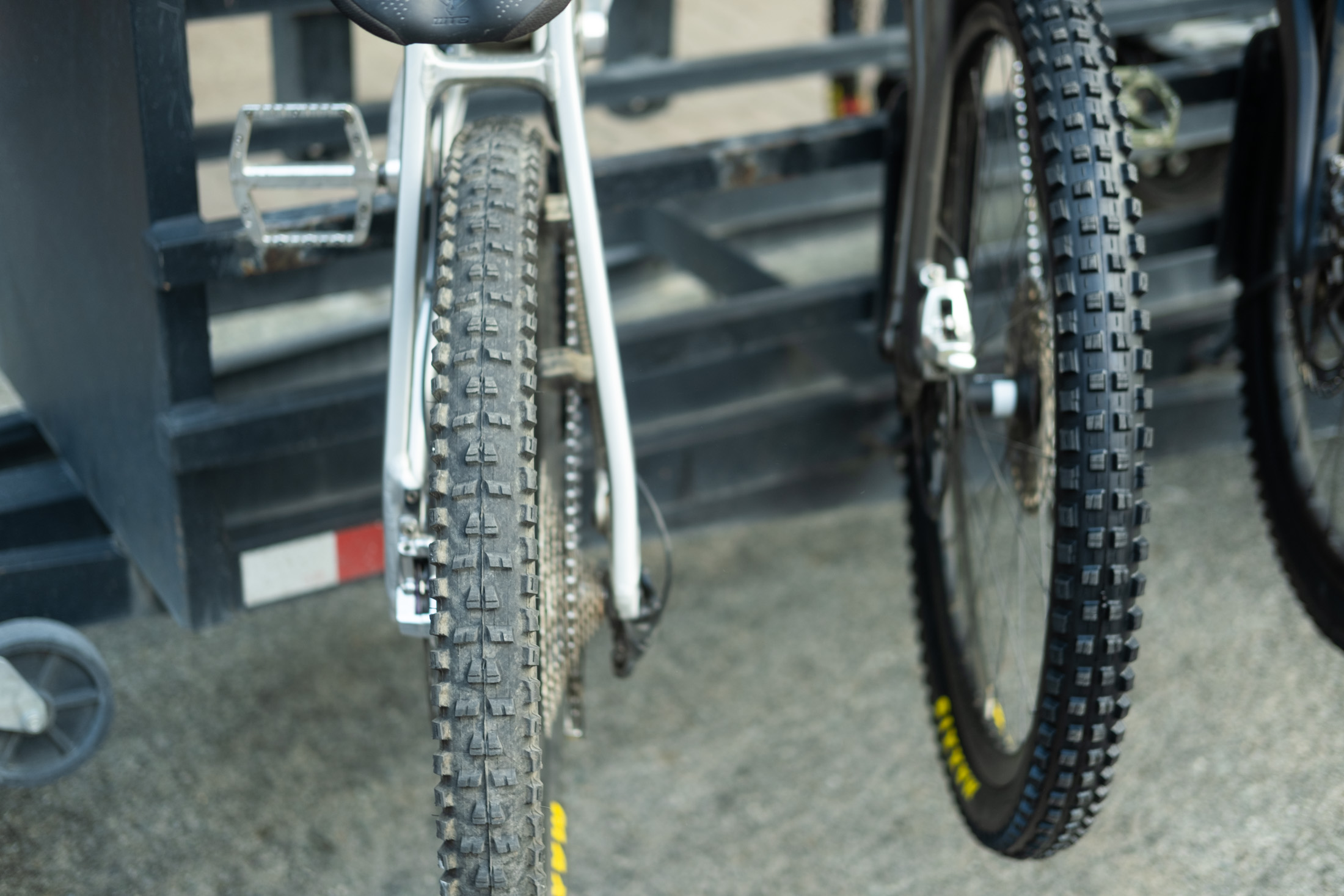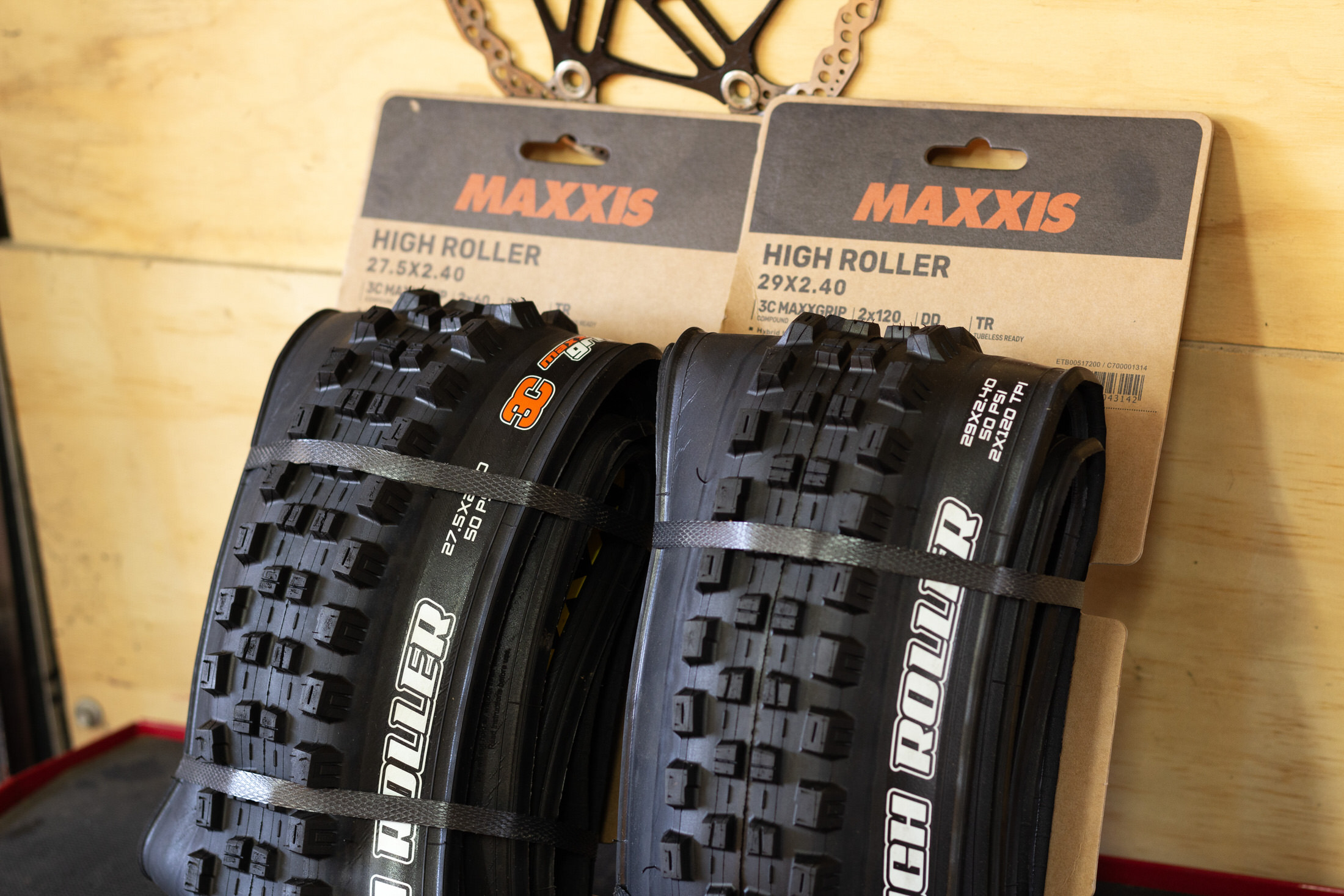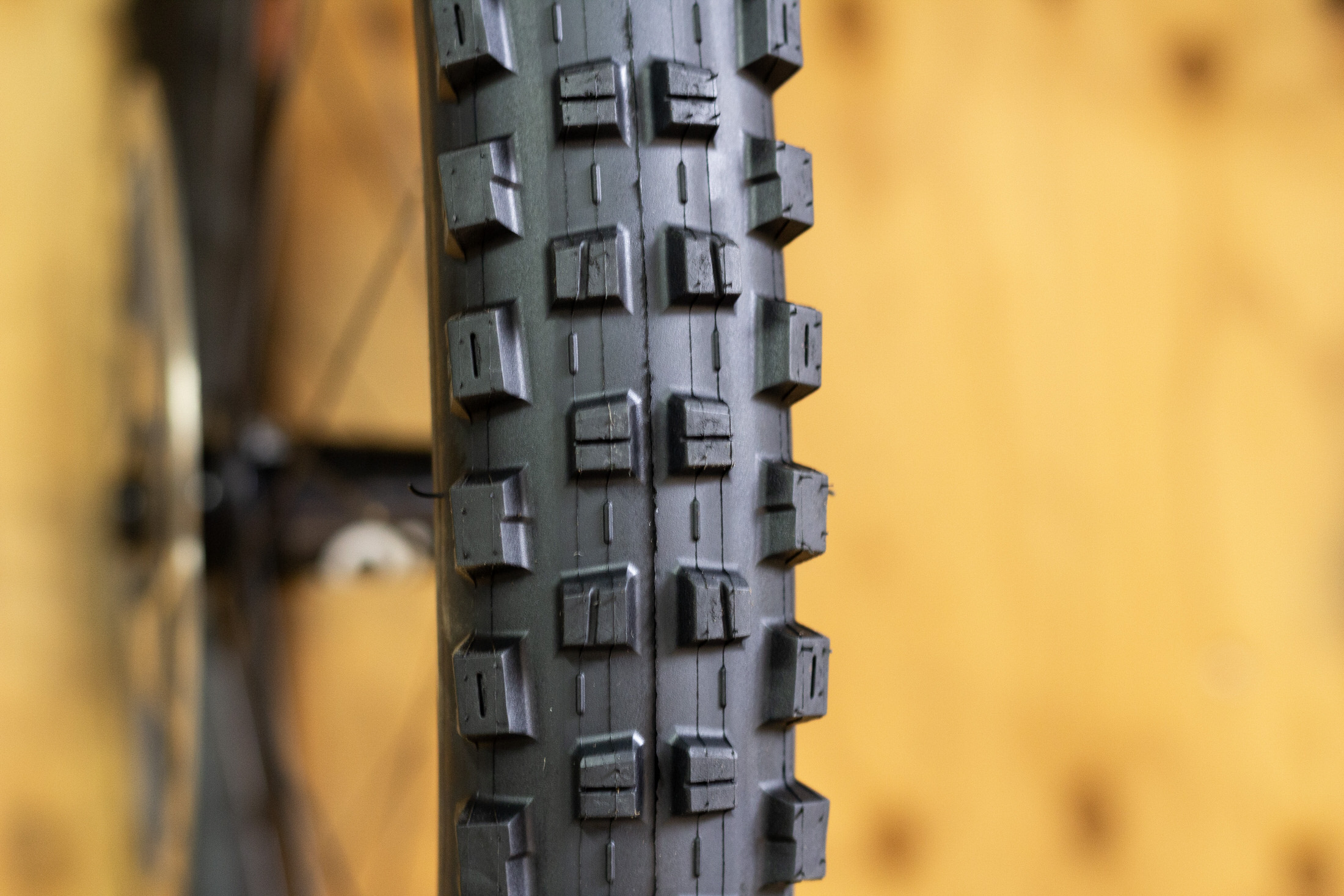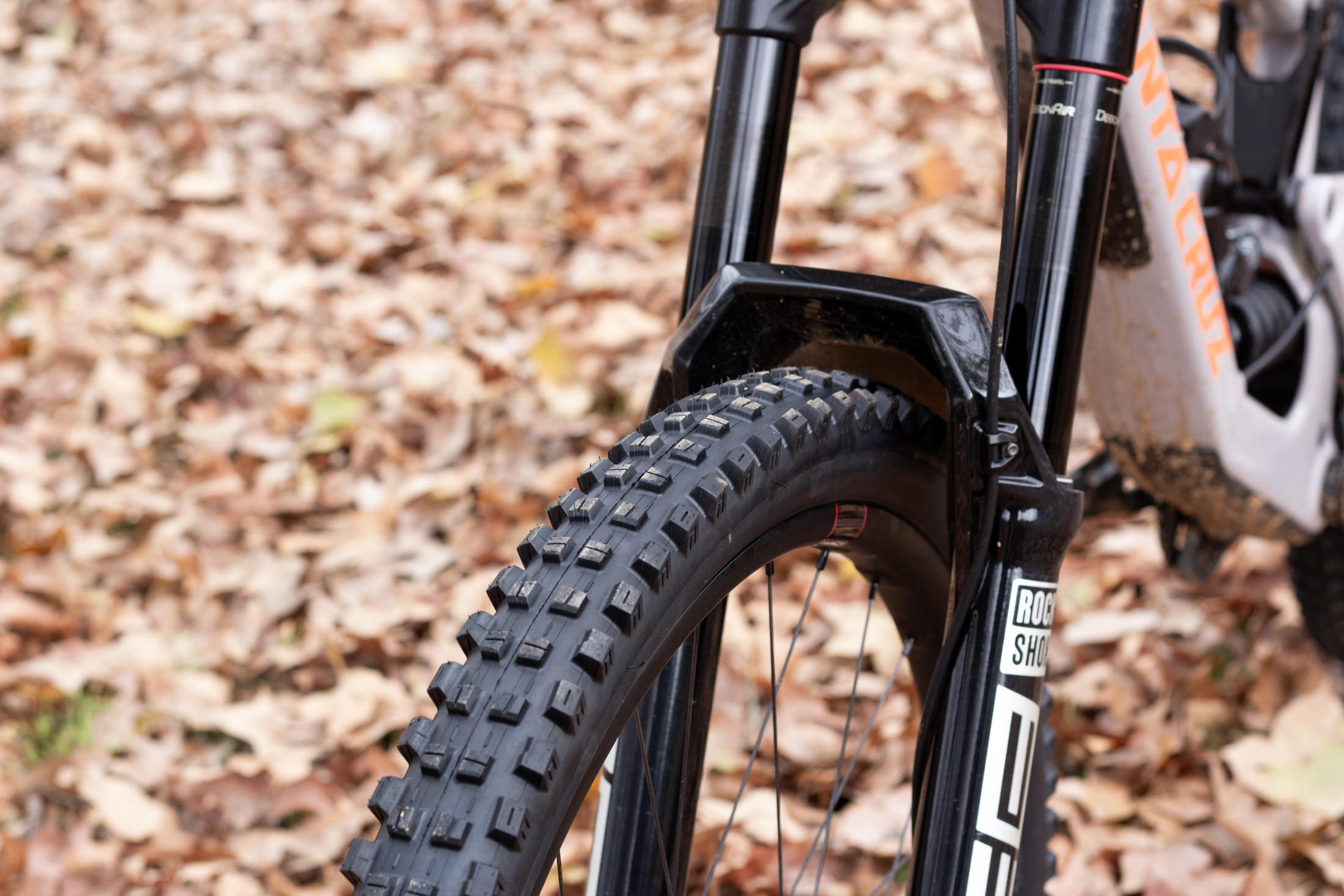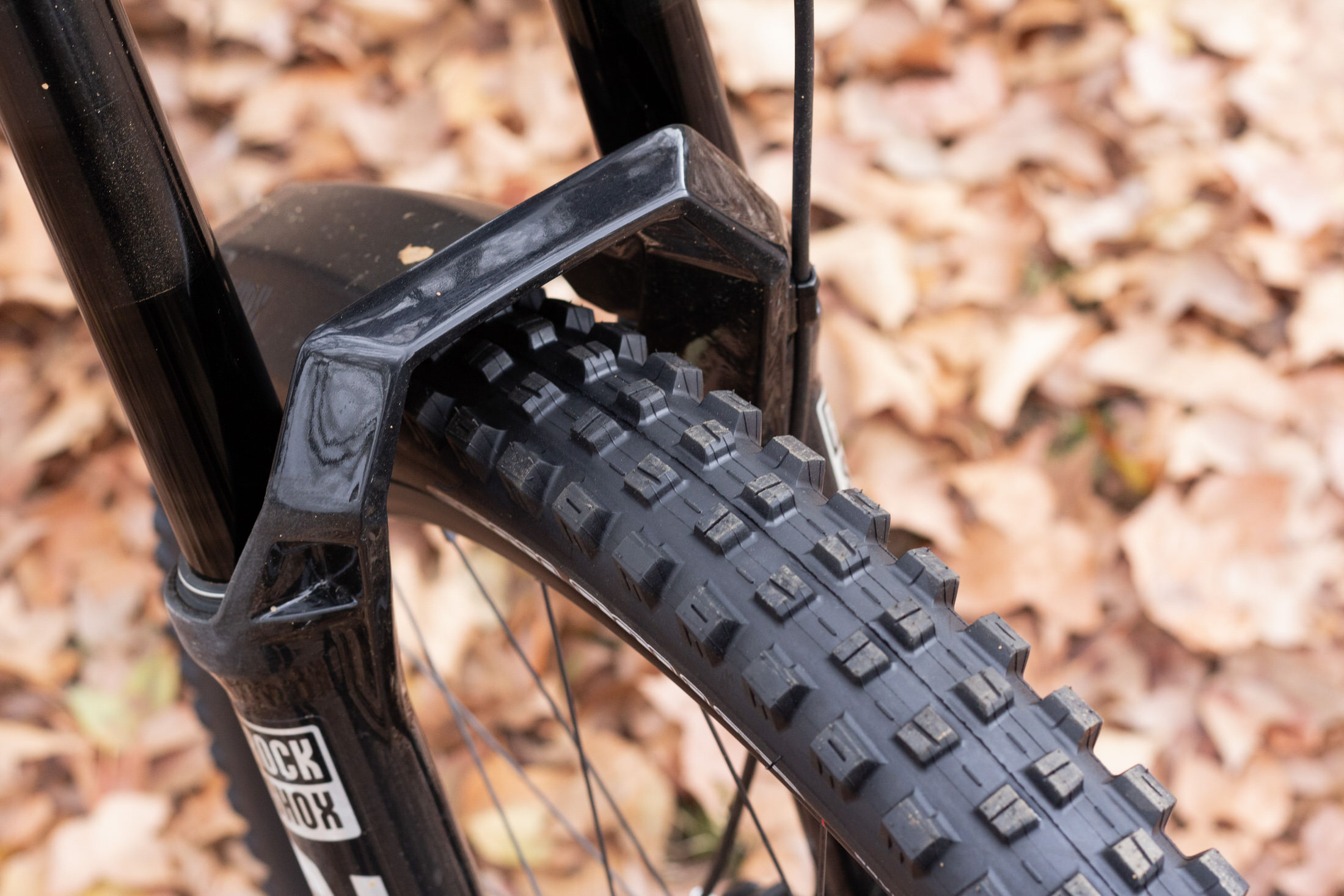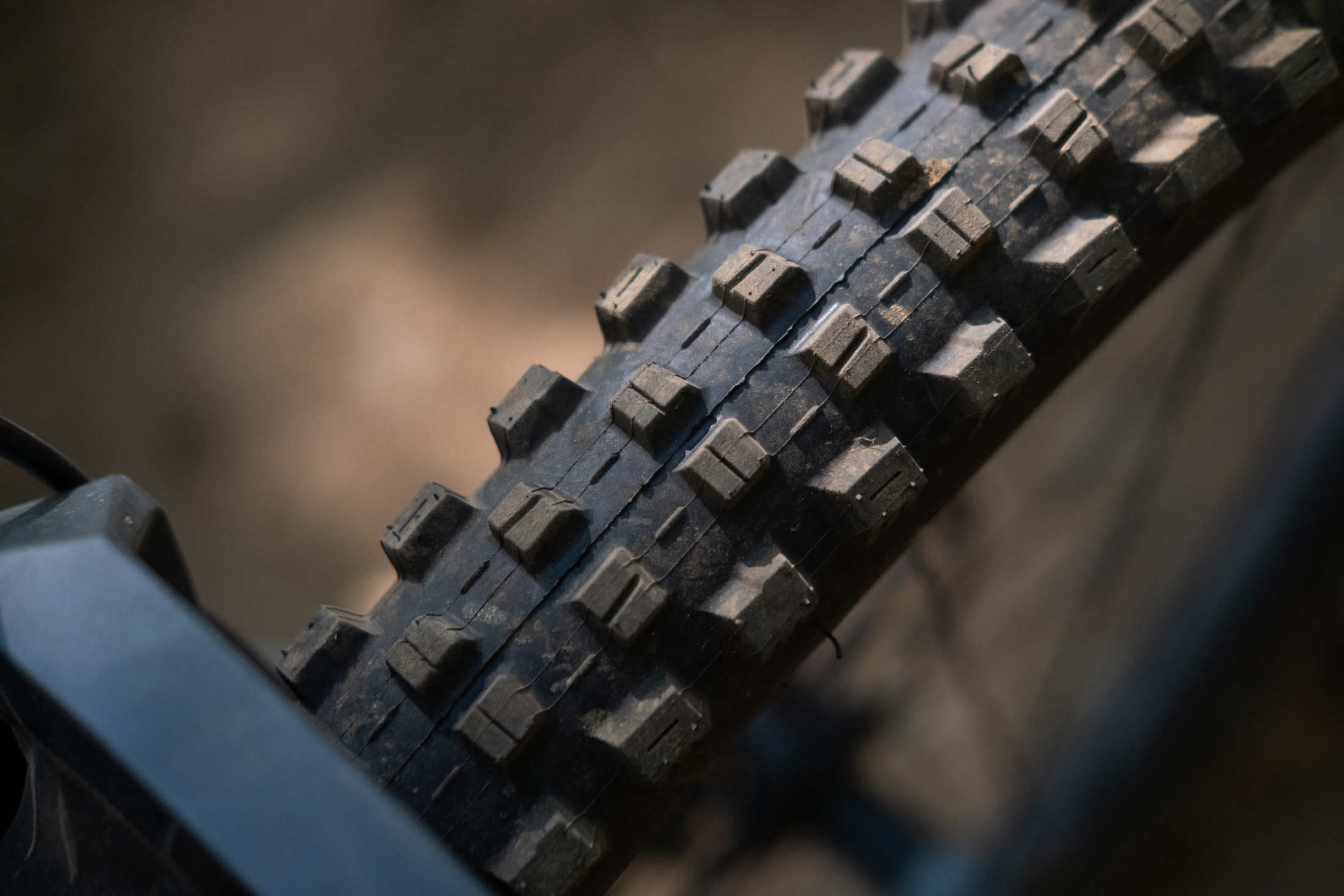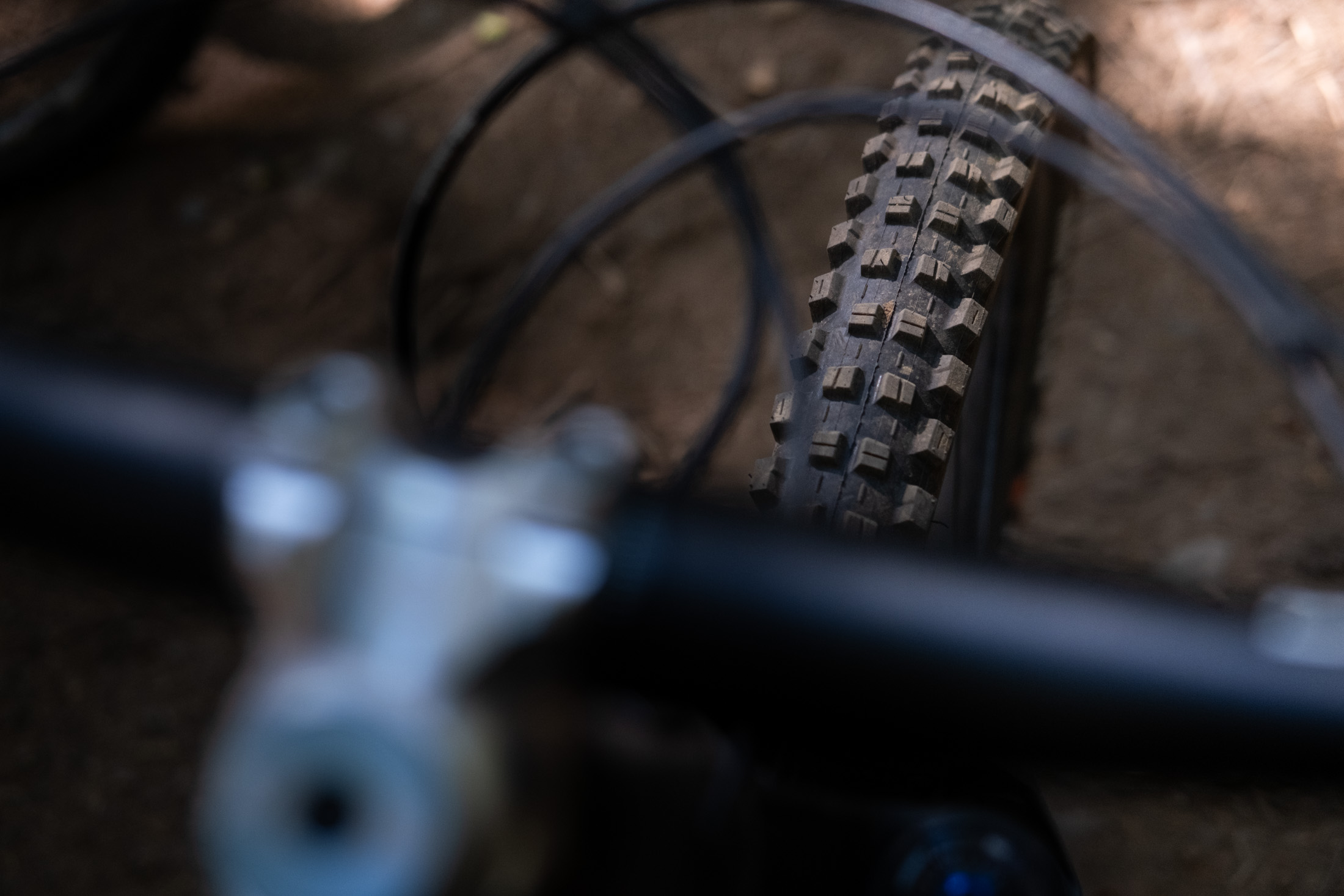Maxxis has finally broken cover on its latest release, a completely revised variant of the classic High Roller tyre, now labelled the High Roller 3. The new release now slots in between the fan-favourite Assegai, and the mud-specific Shorty, being a significant departure from previous iterations.
The High Roller label has been a staple in the brand’s lineup for over two decades, with the most recent variant being released in 2012. This saw minor revisions to the overall shape of each of the lugs, however the pattern remained largely unchanged from the original shape, and was a fast-rolling offering commonly used as a rear tyre. Twelve years later the High Roller has been revised yet again, with a significant shift in the intended use and tread pattern.
The new intermediate tyre combines an open tread pattern with large, sturdy side knobs, enabling effective soil penetration in wet weather along with the improved traction and cornering control required for dry and dusty conditions. The tread layout is very similar to the Maxxis Shorty, the brand’s mud-specific tyre, albeit with larger side lugs and different lug sipes. It is also not too dissimilar to a Continental Argotal, which is the most aggressive in the German tyre manufacturer’s lineup.
The High Roller 3 has been in development for quite some time, with the hybrid tyre already seeing World Cup success underneath Jackson Goldstone with his iconic win at Mont-Sainte-Anne in late 2023, and Ronan Dunne’s breakout win in Poland this year.

Technical Overview
The brand hasn’t strayed from its typical casing and compound offerings, with the High Roller 3 available in EXO+, Double Down and DH casing options, in both 29×2.4in and 27.5×2.4in sizes. Maxxis often offers its tyres in multiple compound options, but at this stage, the High Roller 3 is only available in the softest MaxxGrip compound, which isn’t overly surprising given the intentions of the tyre.
On the scales, the 29×2.4in DD casing and the 27.5×2.4in DH casing High Roller 3’s we have in for test were separated by 1 gram, weighing in at 1,282g and 1,281g respectively. For reference, the popular Assegai and DHR2 combination in the same configuration weighs in at a claimed 1,370g and 1,223g respectively, hence not a whole lot of weight either lost of gained either way.
Flows Initial Impressions
We have the Maxxis High Roller 3’s in for test, and seeing as we are in the heart of winter, throwing them straight onto Nick’s Santa Cruz Nomad seemed a no-brainer. We are still very much in the early days of our relationship with the High Roller 3, but it is safe to say they have impressed straight away.
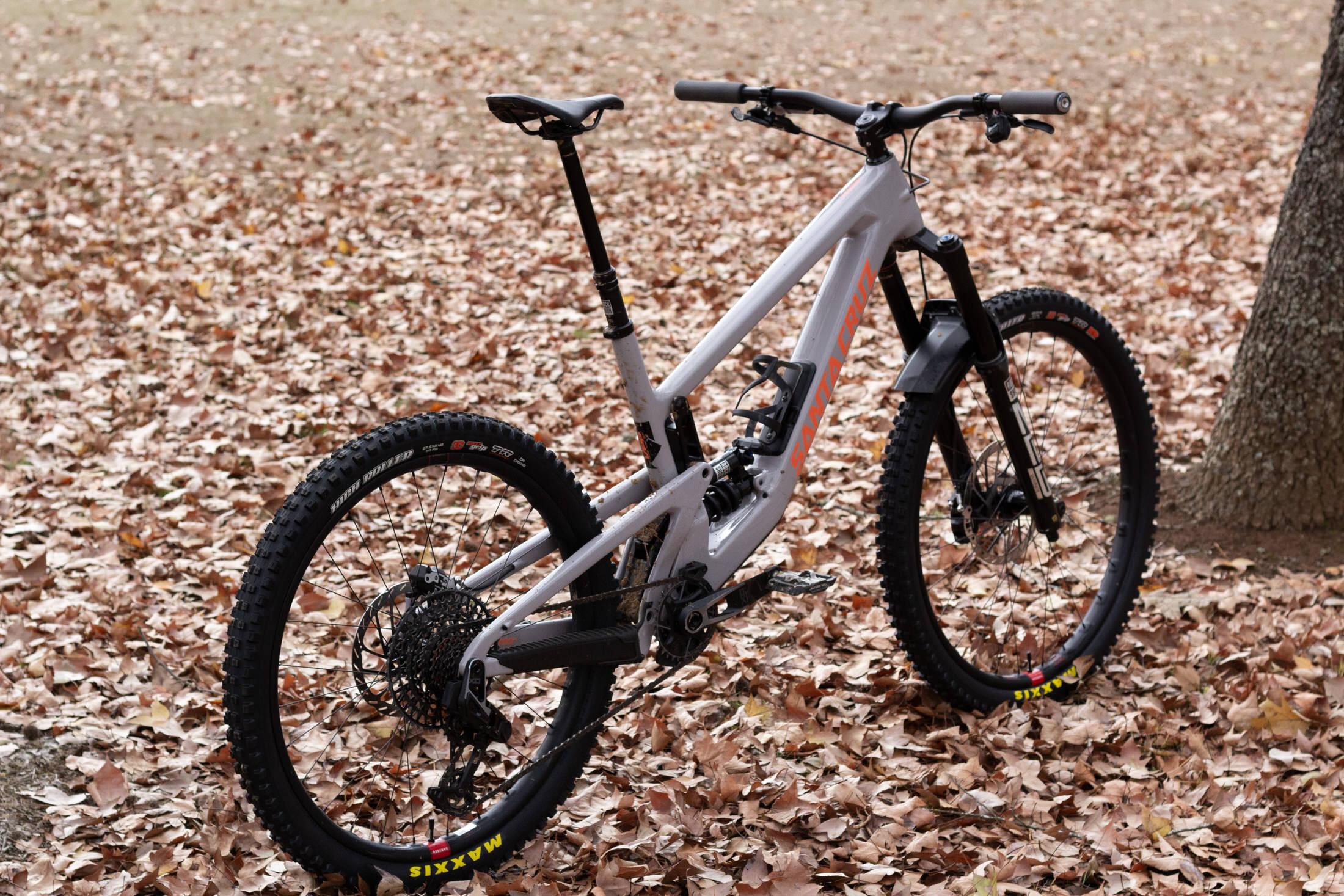
The soft compound intermediate tyres seemingly roll quite well, a surprise given its chunky appearance. Our initial impressions found them to have similar rolling resistance to the Assegai/DHR2 combination mentioned earlier, potentially even slightly quicker out of the gate.
The 2.4in width of the High Roller 3 mounted to the front has noticeably sharper handling when compared to a 2.5in Assegai, the latter which can sometimes feel a bit muted. The outer lugs provide a locked-in sensation when cornering hard in the wet and loose conditions we have tested them in so far. Braking traction is impressive thanks to the large square edges of the knobs, offering performance that was considered on par with, and slightly more controlled than a DHR2.

The characteristic that stood out the most so far was the High Roller 3’s ability to maintain consistent traction when faced with wet or soft off-cambered sections of trail. The open tread and large outer knobs pattern do an admirable job of holding a line and avoiding slipping down the camber, making it easier to stay on line when things were getting a little wild.
So what are the downsides of the High Roller 3’s? So far there aren’t any glaring issues that we have noticed. They certainly aren’t as fast-rolling as their predecessors, however Maxxis already has the Minion DHF and Dissector that are ideal for loose and dusty trails. While the traction was impressive in the off-camber’s, we did notice the rear end step out considerably on some slick angled roots in multiple instances. This appeared more severe than how DHR2’s respond in similar scenarios, and some back-to-back testing may be in order here to identify the true difference.
So far the High Roller 3’s have been impressive, and we can see them being an excellent choice for gravity-focused riders looking for supreme traction in loose conditions. We’ll be spending more time on them in the coming months in varying conditions to see how they stack up.
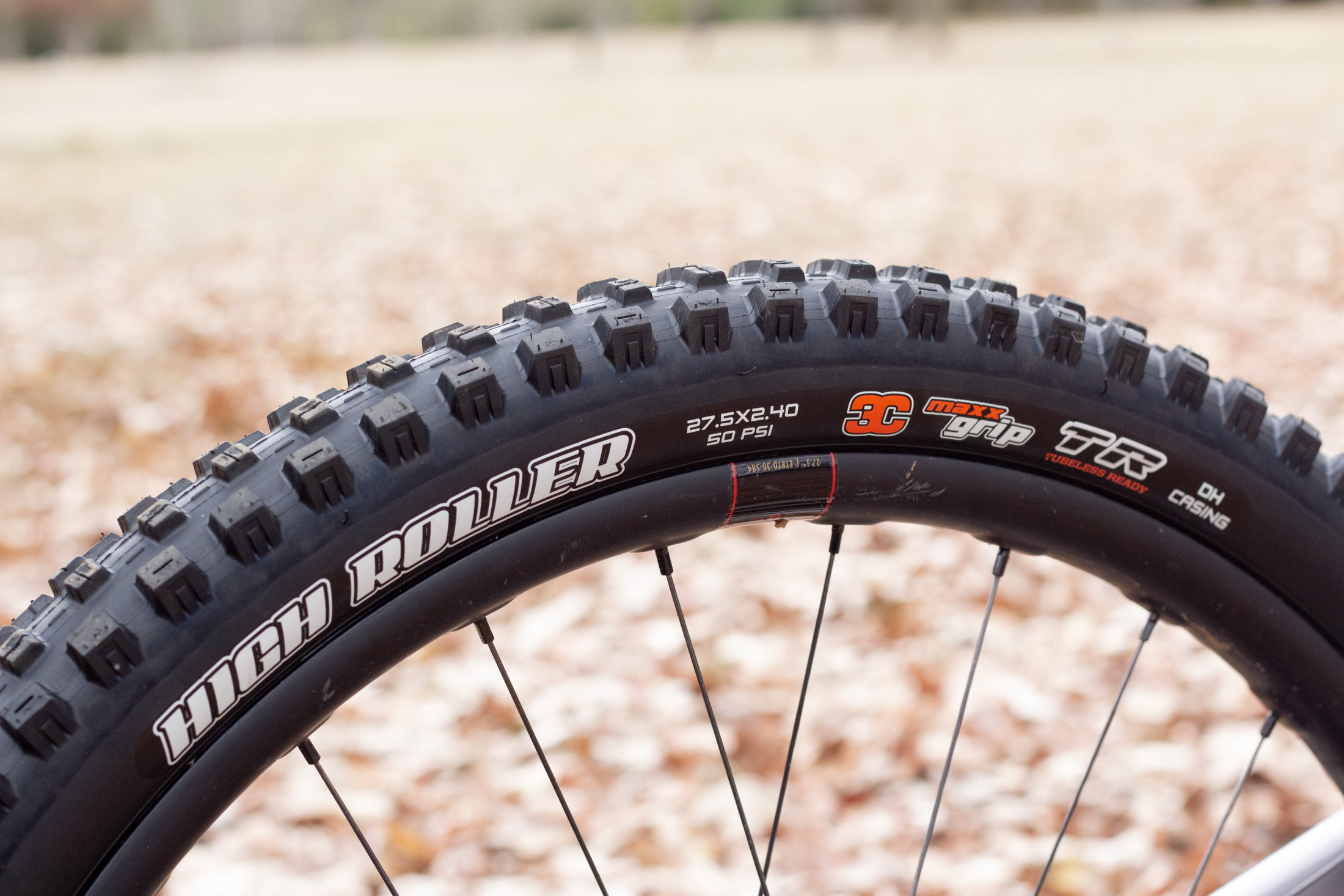
As well as testing the tyre in the current Aussie winter conditions, we also got some dry and dusty laps in on the High Roller III. The official launch was held in Whistler during Crankworx. Maxxis put on a day of shuttles in Squamish so we could get some back-to-back laps in on it.

When the trail is really loose and dusty the High Roller III performs well. However, when you’re back on true hard packed surfaces, we believe the Assegai still has a slight edge over the High Roller III. Our initial impressions would be that the surface of the trail needs to be somewhat disturbed by either mud or dust for the the High Roller to really shine.
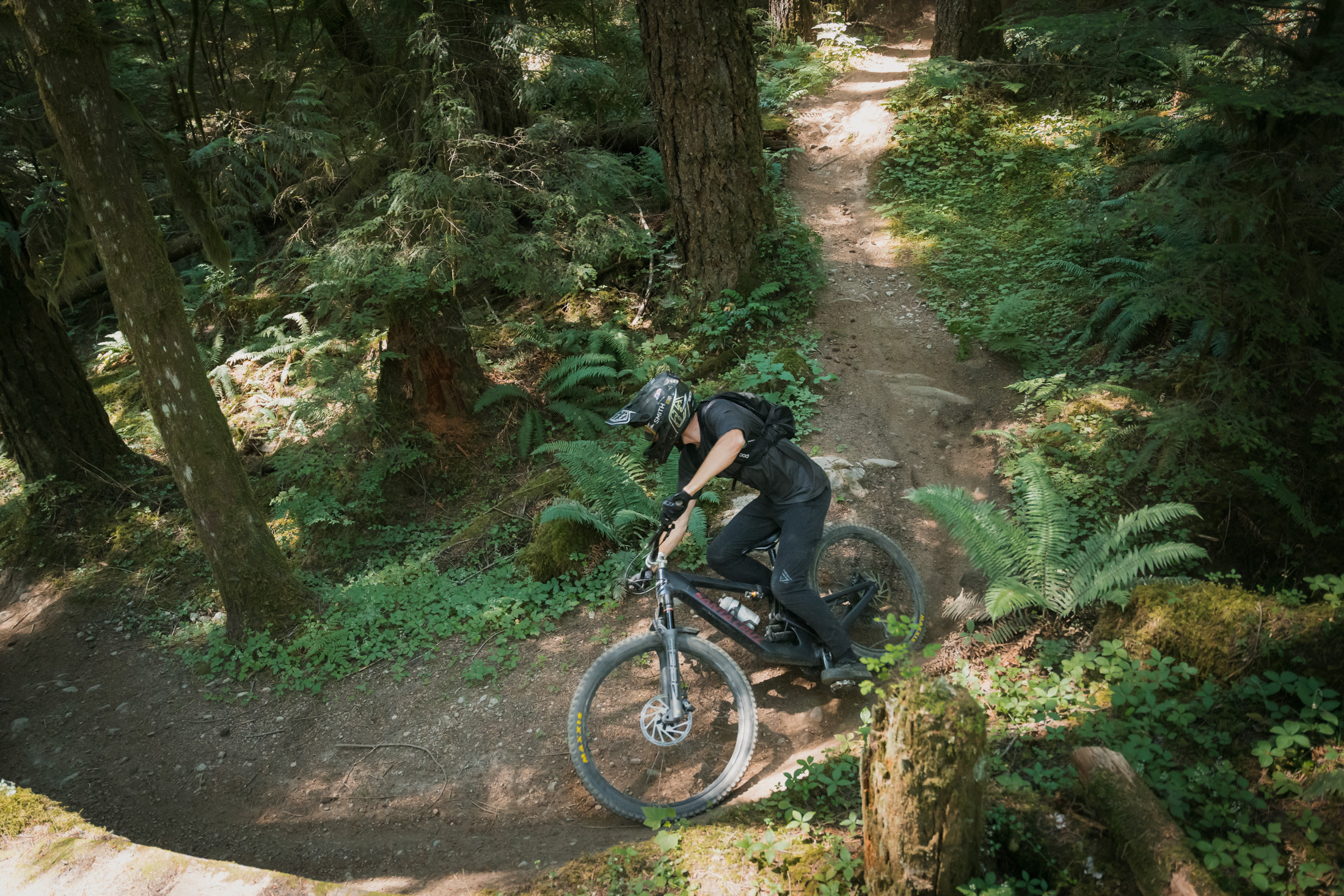
Overall, so far, it has been an impressive tyre. It is much more versatile than what we first expected. Definitely not just a mud tyre! We can see a lot of people opting for this tyre particularly on the front. We’ll have more to report once we get more time on this exciting new tyre.
